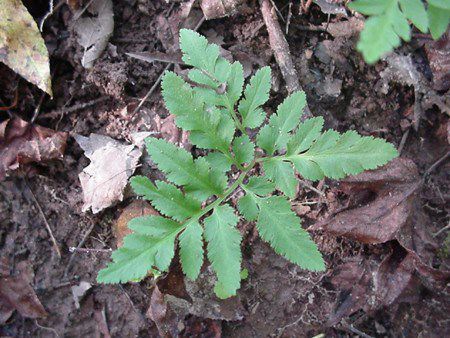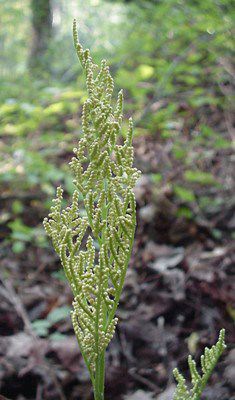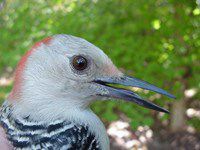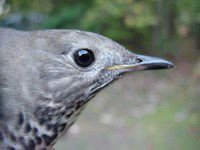|
|
|||
|
THIS WEEK at HILTON POND Installment #---Visitor # (Back to Preceding Week; on to Next Week) |
|
GRAPEFERNS & RATTLESNAKE FERNS The property now occupied by Hilton Pond Center was a working farm for nearly a century, and perhaps longer. As is typical in the Carolina Piedmont, the land was cultivated in corn and cotton and other row crops, and later grazed by cattle--practices that eliminated many native herbaceous plants. Additionally, humus and topsoil were depleted by overfarming and erosion, so there are few woodland wildflowers at the Center--and even fewer species of ferns.
Grapeferns at Hilton Pond Center do not compete well against other ground cover, and on-going mechanical removal of invasive Japanese Honeysuckle (Lonicera japonica) seems to have enhanced their chances. They are doing best in shaded microhabitats with decomposing leaf litter and somewhat acidic soil. Because new grapeferns are sprouting a few yards away from established colonies, they likely are propagating by spores; at the same time, the rootstocks of established colonies are putting up additional vegetative fronds that make the colonies more dense (below).
Like its related species (e.g., Common Grapefern, B. dissectum), Southern Grapefern is difficult to cultivate, apparently because of a mycorrhizal soil fungus that is a required symbiote in its rootstock. Transplanted grapeferns almost always become increasingly smaller and die within three years. All text & photos © Hilton Pond Center |


 One fern that has become increasingly common over the past 20 years is Southern Grapefern (Botrychium biternatum), whose triangular leathery green leaves are found in several shady places at the Center. Grapeferns derive their common name from the grape-like cluster of sporangia (right) borne on a fertile frond that--like the sterile, vegetative leaf (above)--arises from the plant's thick, corky rootstock. The species name means "twice divided in threes," a reference to the leaf being dissected into leaflets and the leaflets then divided into even smaller sub-leaflets.
One fern that has become increasingly common over the past 20 years is Southern Grapefern (Botrychium biternatum), whose triangular leathery green leaves are found in several shady places at the Center. Grapeferns derive their common name from the grape-like cluster of sporangia (right) borne on a fertile frond that--like the sterile, vegetative leaf (above)--arises from the plant's thick, corky rootstock. The species name means "twice divided in threes," a reference to the leaf being dissected into leaflets and the leaflets then divided into even smaller sub-leaflets. At Hilton Pond Center, Southern Grapefern produces its spores in late summer and early fall, after which the fertile frond withers and dies. In winter, its green sterile fronds become prostrate and sometimes turn a bronze color.
At Hilton Pond Center, Southern Grapefern produces its spores in late summer and early fall, after which the fertile frond withers and dies. In winter, its green sterile fronds become prostrate and sometimes turn a bronze color.

